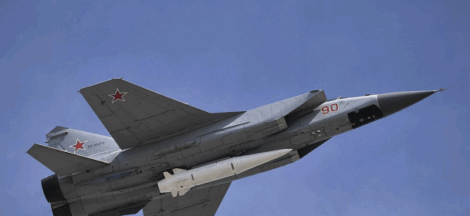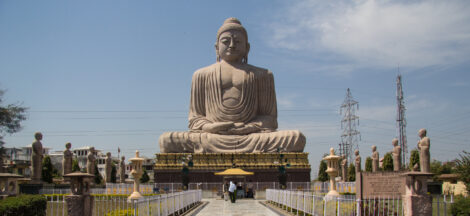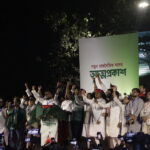Pakistan’s Prime Minister, Shehbaz Sharif, made a swift visit to the Sialkot and Pasrur airbases, a move seen as mirroring Indian Prime Minister Narendra Modi’s recent trip to the Adampur Air Base. Sharif’s visit has sparked considerable attention, given the damage these airbases sustained during the latest conflict between India and Pakistan, when Pakistan supported militant activities during Operation Sindoor.
The timing of Sharif’s visit comes just a day after Modi’s symbolic visit to Adampur, located in the northern Indian state of Haryana, which plays a pivotal role in India’s air defence strategy. Modi’s presence at the airbase was seen as a message of strength and deterrence, following heightened tensions in the region. Sharif’s visit to Pakistan’s own strategic airbases in Sialkot and Pasrur is being interpreted as a direct response to the Indian move.
The two airbases Sharif toured are of strategic importance in Pakistan’s defence infrastructure. Both were significantly damaged during the recent hostilities, which escalated after Pakistan’s intervention in Operation Sindoor—a high-stakes counterterrorism operation aimed at neutralising insurgents. The Pakistani intervention, which aimed to support terrorist groups active in Kashmir, led to retaliatory strikes by India, resulting in damages to these facilities. The damage inflicted on these bases has heightened concerns about the long-term impact on Pakistan’s military readiness.
Sialkot and Pasrur airbases have been critical points of military focus for Pakistan, given their proximity to the international border with India. The airbases house significant air defence assets and are seen as essential for maintaining air superiority in the region. During the recent conflict, both bases were targets of airstrikes and artillery bombardments, marking a shift in the intensity of aerial engagements between the two nations. The recovery of these airbases and their return to full operational capacity have become a priority for the Pakistani government.
Sharif’s visit to these sites underscores Pakistan’s intention to demonstrate resolve in the face of adversity. He visited both Sialkot and Pasrur to oversee the restoration efforts personally. His comments during the visit highlighted the Pakistani military’s efforts to repair the damaged infrastructure swiftly and ensure that the bases are operational for future contingencies. His appearance at these airbases was also interpreted as a statement of defiance, reinforcing Pakistan’s commitment to strengthening its military deterrence, especially after the damage to its strategic assets.
The escalation of military engagements, particularly the involvement of airstrikes, signals a worrying trend in India-Pakistan relations, where tensions have been mounting due to cross-border terrorism and territorial disputes. The exchanges between both nations have become more frequent, with air defence systems and missile deployments at the forefront of their military strategies. Modi’s visit to Adampur was seen as a message not only to Pakistan but also to internal critics, signalling India’s preparedness to defend its sovereignty at all costs.
The diplomatic implications of these visits are significant. Modi’s trip to Adampur is believed to have been a calculated move to consolidate his position within India, showing national strength and readiness amidst growing concerns about security threats. In contrast, Sharif’s visit to the airbases in Sialkot and Pasrur reflects Pakistan’s own strategic priorities of reinforcing its defence and ensuring a response to India’s military posturing.
The conflict and the destruction of critical infrastructure at these airbases also raise questions about the long-term implications for regional security. The operational damage to both Pakistan’s airbases comes at a time when military tensions are high, and both nations have been expanding their military arsenals. The airstrikes on Sialkot and Pasrur were part of broader military exchanges, with both sides enhancing their air capabilities and advancing missile defence technologies.
Beyond the immediate repair efforts, the political fallout from these military exchanges could have long-lasting effects. Pakistan’s move to rebuild its airbases and reinforce its military readiness has implications for both regional stability and the global community’s understanding of the Indo-Pakistani conflict. The international community continues to monitor the situation closely, with both India and Pakistan being key players in South Asian geopolitics.
The two airbases were not only military assets but symbols of national pride, with both countries using them to bolster their narratives of security and defence strength. The repair and restoration of these airbases are vital for maintaining the balance of power in the region, and Pakistan’s emphasis on rebuilding their strategic significance points to a broader geopolitical strategy of asserting its military capabilities.
With tensions running high and both nations on alert, the question of how these developments will impact future peace talks remains unanswered. Both Modi and Sharif have repeatedly emphasized their commitment to safeguarding their respective countries, but the military posturing and strategic movements in these airbases suggest a deeper, more complex struggle for control over the region’s military and diplomatic landscape.




 Efforts to Merge NCP Factions Accelerate Ahead of 2025 Polls
Efforts to Merge NCP Factions Accelerate Ahead of 2025 Polls 